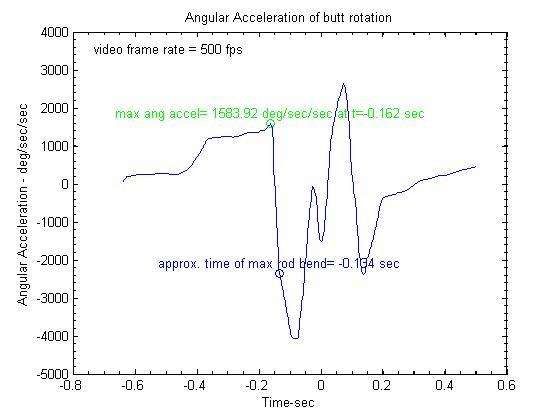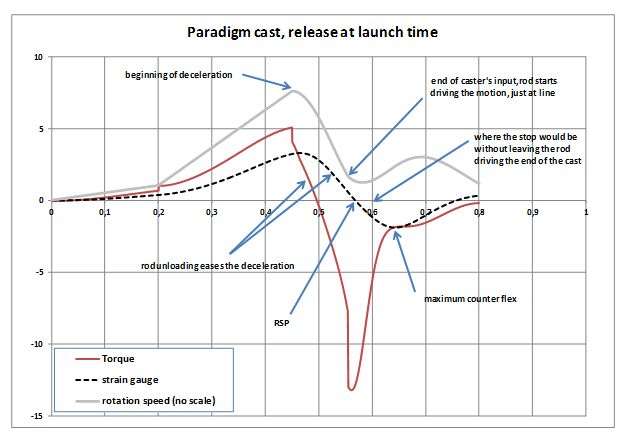Walter,The easiest way to understand the difference would be look at the frequency domain rather than the time domain.
That may be true, and you would find that the sin(x)/(x) like response for those two cases (zero rise time or 50 ms rise time) would be nearly the same.
But that is missing the point. You and Vince need to realize that the rise time of the applied acceleration used in casting is much smaller than 1/(loaded frequency) of the rod and line. Consequently, Vince's statement that:
Is not true. We do not "gradually apply" the torque used to accelerate the rod rotation. Rather once a good caster starts rotating the rod (after a drag phase with little or no rotation) he gets to a sizable angular acceleration level rather quickly as shown in the angular acceleration curve that Grunde measured for the Paradigm cast that is shown below. From that graph you can see that Mathias reached his nominal acceleration value of around 1000 deg/s^2 in about 50 ms. The loaded frequency of the rod and line for that cast was around 1.2 Hz. Thus that "rise time" was about 1/24 of the loaded frequency period, and thus is far from being "gradual."For a gradually applied force such as a fly cast, the amplification factor is less than 2 and related to the rise period.

If you had a better understanding of Merlin's model would you would understand that the near 2x increase you get for the force applied with a flexible rod depends on the magnitude and duration of the applied acceleration not on its relatively short rise time.
Gordy


